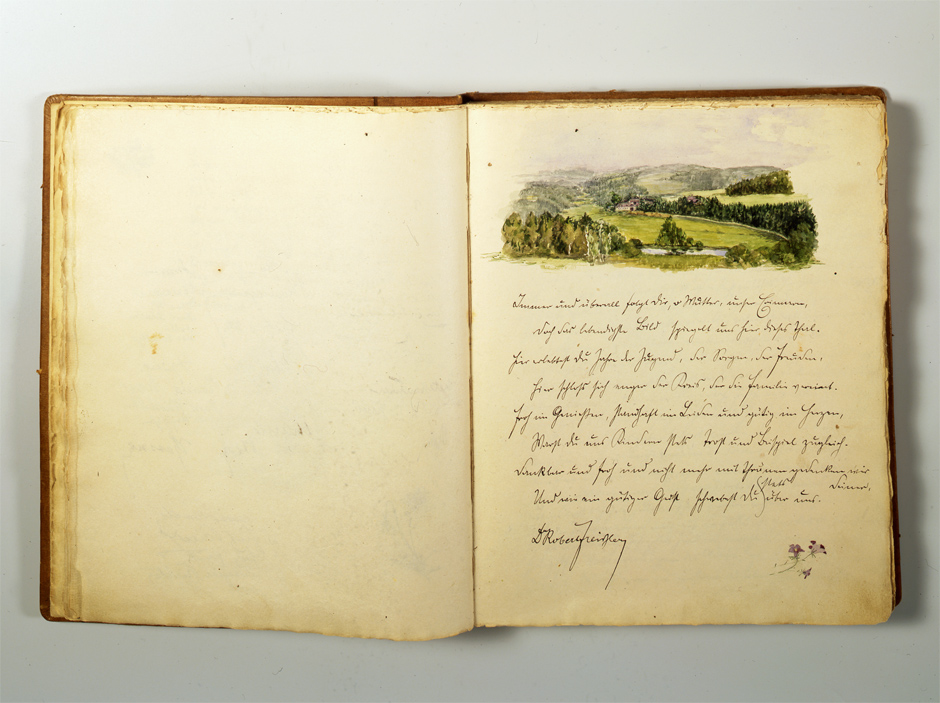
Winter coat, wool, fur trim; 1941; Gift from Dorette Poland

Family´s Weißhuhn from Gloß-Glockersdorf by Troppau guestbook; machine-made paper, calf, 1922–1946; purchase
Remembering Piece by Piece. First objects for the future exhibition
Project in collaboration with Stiftung Flucht, Vertreibung, Versöhnung (SFVV) (Foundation Flight, Expulsion, Reconciliation)
During and after the Second World War, millions of Germans fled from the territories occupied by German forces in Central, Eastern, and South-Eastern Europe as well as from formerly ethnic-German areas and zones of mixed population. Also affected were territories in which Nazi Germany expelled the local populations and resettled Germans. Some escaped from these areas, and some were forced to move. In the German politics of history this displacement is called "Flucht und Vertreibung" (flight and expulsion) and the people are "Vertriebene" (expellees).
The topic has been very sensitive in the European context since Germany introduced it. The idea of building a center in Berlin commemorating these displacements has stirred up a heated debate about historical revisionism, the danger of decontextualizing the past, and questions of cultivating national narratives. After many historical and political discussions, on a resolution of the German Bundestag, the Stiftung Flucht, Vertreibung, Versöhnung (SFVV) (Foundation Flight, Expulsion, Reconciliation) was established in 2008. In 2016 a center for exhibitions, documentation, and information will open in Berlin.
The site of this center will be the completely rebuilt Deutschlandhaus. It is located near the former Anhalter Bahnhof and a number of memorials such as the Topographie des Terrors (Topography of Terror), as well as fragments of the Berlin Wall. Questions of the politics of history, strategies of commemoration, constructing the future through interpretations of the past, and attempts to introduce counter-narrations are important issues within the 7th Berlin Biennale. Therefore we invited the curatorial team of the Foundation Flight, Expulsion, Reconciliation to present a project. They are displaying items from their collection of belongings donated by Germans who left the land where they were living (or by their descendants).
The "use" of history is able to shape the future and influence the discourse on German identity. We do not want to observe this process from a safe distance; we prefer to be close to it.
by Artur Żmijewski, Joanna Warsza and Zofia Waślicka
Deutschlandhaus
The building today known as Deutschlandhaus was built in 1926 as the eastern wing of the adjacent Europahaus. More >

Deutschlandhaus
Stresemannstrasse 90, D-10963 BerlinMore >



On Twitter
No Responses / Leave a Reply